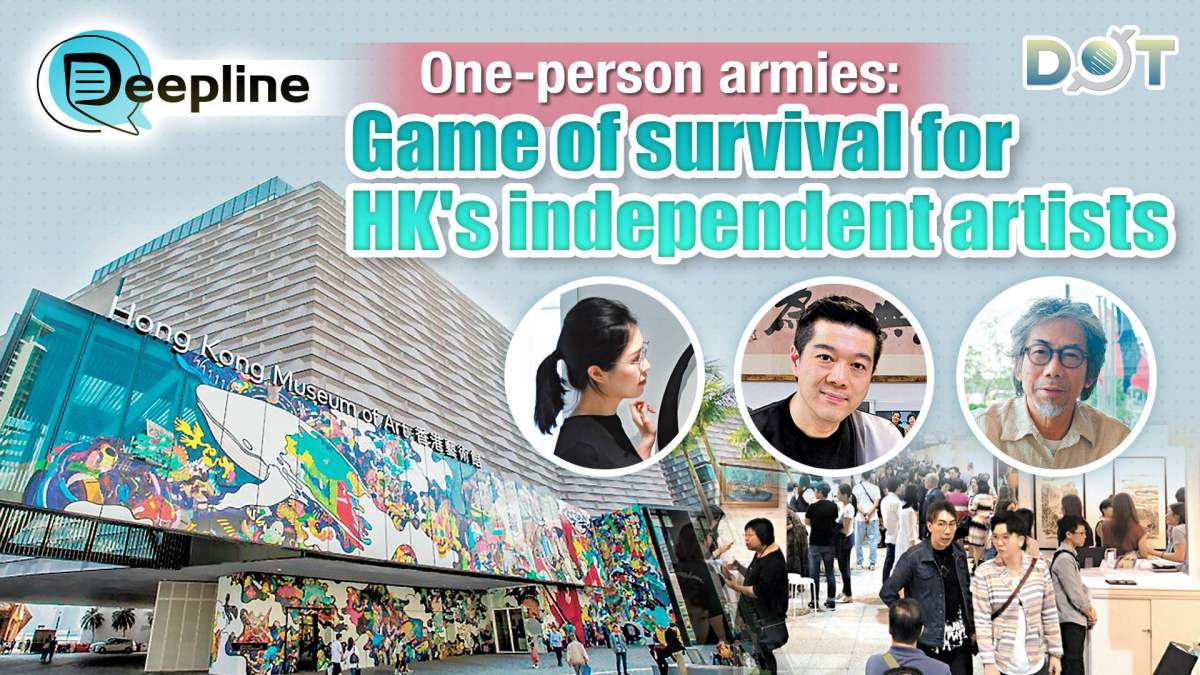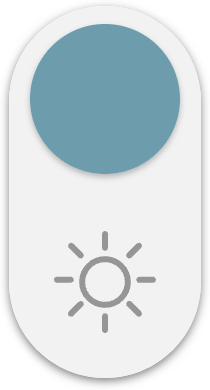
Under the dazzling spotlight of Art Basel Hong Kong, as global collectors vie for multi-million-dollar artworks, a group of independent artists operating outside the gallery system are employing unique survival strategies to safeguard the city's artistic soul amidst the tides of capitalism.
In this land steeped in multicultural influences, Hong Kong's independent artists navigate between tradition and modernity, local and global, commerce and art with distinctive wisdom, honing their independent artistic expression within an international perspective while confronting an increasingly competitive market. These independent creators adopt a stance of remaining autonomous from global art trends yet not opposing them, striking a delicate balance between global capital flows and their artistic exploration.
How do they survive? What challenges do they face, and what future possibilities await them?
As a painter and sculptor with 50 years of independent practice, Chau Shik-hung has witnessed multiple transformations in Hong Kong's art ecosystem. He directly points out structural flaws in the current local art environment: galleries lack long-term development plans for emerging artists, and government funding favors institutions over individual creators. This forces many artists to become "one-person armies" on the independent path, often relying on curatorial projects and commercial collaborations to sustain their practice. However, this dual role of creator and self-manager drains significant energy away from actual creative work.
Chau recalls that the most challenging period of his career was when he first started a family, needing financial stability while still unrecognized in the art world. He worked full-time as a graphic designer by day, creating art only during nights and weekends, gradually building his reputation. After persevering for nearly two decades, he received his first major commercial commission: a real estate company invited him to create sculptures for a new development after seeing his work.
Chau explains he operates without an agent, handling everything from client communication to design sketches, production supervision, and final execution single-handedly. Such commercial collaborations eventually became his primary income source, which he prefers to term "art-commerce symbiosis."
"Financial pressure impacts artists—without economic stability, how can one focus on art?" Chau emphasizes valuing commercial opportunities while maintaining clear boundaries. As an independent artist, commercial work requires fully accommodating clients' visions, often resulting in outputs that don't reflect his personal style and thus aren't considered his authentic creations.
Chau's studio occupies a 1,000-square-foot space in a Kwai Chung industrial building purchased two decades ago. Here, he's produced numerous works documenting Hong Kong's social life, some preserved unsold due to their special significance. Chau believes this capacity for social observation and unfettered expression constitutes the unique privilege of independent artists.
Balancing creative vision and commercial demands
Calligraphy artist Cink Shan previously worked in marketing and branding. Around 2016-2017, approaching her thirties, she contemplated her future and ultimately resigned to take a year-long sabbatical pursuing personal interests. She shared calligraphy and life reflections on social media, soon catching the attention of legendary Hong Kong designer Alan Chan. Her proposal for a bar-hosted calligraphy exhibition won Chan's endorsement, leading to a swiftly organized, sold-out show that attracted media and industry attention.
Despite gallery offers, she chose to remain independent, subsequently collaborating with various brands and institutions across commercial, creative, and product development projects.
"The fundamental challenge of art is instability. If you insist on artistic integrity, you must accept less-than-ideal income. If you want better earnings, embrace commercial work without resentment about constraints... Frustration often stems from unresolved internal conflicts—once reconciled, it's liberating. 'Artist' is just a label; living well matters most."
Discussing independent artists' development in Hong Kong's art market, Cink Shan highlights severe financial pressures.
"My monthly studio rent and living expenses in Hong Kong totaled about HK$50,000. Production costs are exorbitant too—large calligraphy pieces cost HK$3,000-4,000 per frame at minimum, up to HK$5,000-6,000 or even over HK$10,000. Exhibitions without gallery or sponsor support require at least HK$150,000-200,000 just for venue and production."
To survive, independent artists must undertake commercial collaborations, constantly negotiating between personal vision and market demands—a balancing act that risks eroding creative passion over time, potentially trapping them in commercialized production.
Price of autonomy
In contrast, Eric Ho, a second-generation Lingnan School painter, considers a distinctive personal style crucial for market positioning. Though gallery-unsigned, he occasionally collaborates on exhibitions, enjoying greater autonomy than contracted artists.
He identifies the core challenge as lacking institutional support—independent artists must handle self-promotion and sales on their own. While this brings less income stability than gallery representation, it grants creative freedom unconstrained by exhibition schedules or commercial targets, allowing work to follow inner rhythms. This autonomy is precisely what motivates his independent status.
Despite being selected for one of the 2025 China National Arts Fund's (CNAF) projects, Ho reveals he rarely applies for SAR government grants due to cumbersome procedures.
"I'd rather spend form-filling time painting." He advocates streamlining application processes, increasing major grants, and establishing dedicated funding streams for diverse art forms.
(Source: Wen Wei Po; Journalists: Vicky Zhang, Fan, Ding; English Editor: Darius)
Related News:
Journalist's View | Cinema's enduring paradox
'Ink impressions and silk inspirations' exhibition: Cross-media dialogue in Greater Bay Area




















Comment